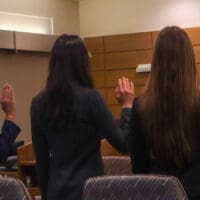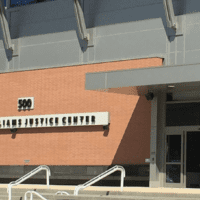

The $3 million in grants will be used to strengthen and expand the art and culture scene in Delaware. (courtesy: Delaware Division of Art)
The Delaware Division of Arts has announced a $3 million distribution of grants to 115 community art organizations.
They range from $1,300 to Wilmington Wintergrass Inc., which is an annual bluegrass festival, to $246,000 to the Delaware Art Museum.
The museum will use the funding to support its exhibits, including the upcoming Pre-Raphaelite show “A Marriage of Arts & Crafts: Evelyn & William De Morgan.” The grant also helps the museum present educational and cultural offerings that connect the community with art, such as its annual Dia de los Muertos Celebration and museum school tours.
There are more rounds of grants expected later in the year. This first round of grants addresses general operating support, project support, arts stabilization, startup and education resource grants.
“Delaware has a long history of investing in the arts and culture sector,” said Jessica Ball, director of the Division of Arts. “We were founded back in 1989, and ever since, we’ve been getting money at both the federal and state level and have used it to invest in arts and culture.”
Some of the money will go to bringing back TranspARTation in August, which is a program that that supports travel expense for Delaware schools to visit state arts and cultural institutions so students can watch performances, attend exhibits and see historical sites.
Up to $500 of costs will be covered through the program. That’s up from the $200 stipend of previous years. The money can help Delaware schools pay for buses, fuel, parking and tolls.
The division also is increasing support for artist opportunity grants. This year’s grants will be $1,000.
They are designed to support an artist’s professional development and help them snag opportunities to display their work.
The deadline to apply to the artist opportunity grants is the first of January, April, July and October. Individuals can reapply each quarter.


$3 million grant breakdown
What does each grant do?
First off, the lionshare of the grants fall under the category of general operating support.
These grants are for supporting art and culture centers and also making sure Delawareans have access to them.
This type of grant uses a three-year application cycle, with an annual March 1 application deadline.
Project support is the next highest area of funding.
The money that goes here will support community-based organizations that offer arts programs with the focus on continuing to develop their students and lessons.
Over $130,000 was allocated as an education resource grant, which strengthened education programs, projects and activities in the Delaware art community, establishing standards-based criteria that will be used by teaching artists.
Money going to arts stabilization is funded through the Division’s participation in the Arts Consortium of Delaware endowment and will help maintain and improve art studios and other facilities.
The smallest pool of grants awarded in this round were the two startup grants, which are dedicated to emerging art organizations and will provide them consultation, training and financial support as they try to grow.
The organization must complete the startup program before it is given the fund.
This year, Reed’s Refuge ($2,500) and Jester Artspace ($2,000) are the two startups awarded grant money.
The project support, education resource, arts stabilization and startup grants all have annual application deadlines of March 1.
For a full list of grants and applications, for individuals and organizations, click here.
Who’s getting operating help?
Here are the organizations who received general operating support:
| Organization | Amount | ||
| Delaware Art Museum | $249,900 | ||
| Grand Opera House | $246,800 | ||
| Joshua M. Freeman Foundation | $197,300 | ||
| Delaware Theatre Company | $146,300 | ||
| Music School of Delaware | $136,500 | ||
| Delaware Symphony Association | $105,600 | ||
| Biggs Museum of American Art | $104,000 | ||
| Christina Cultural Arts Center | $98,200 | ||
| New Candlelight Productions, Inc. | $88,300 | ||
| OperaDelaware, Inc. | $86,700 | ||
| The Delaware Contemporary | $84,200 | ||
| Clear Space Theatre Company | $73,800 | ||
| Rehoboth Art League | $73,200 | ||
| The Henry Francis DuPont Winterthur Museum, Inc. | $72,500 | ||
| The Choir School of Delaware, Inc. | $58,000 | ||
| Rehoboth Beach Film Society | $52,000 | ||
| First State Ballet Theatre | $43,400 | ||
| Delaware Celebration of Jazz | $43,000 | ||
| Delaware Dance Company | $42,300 | ||
| Center for the Creative Arts | $38,700 | ||
| The Everett, Inc. | $36,700 | ||
| Wilmington Ballet Academy of the Dance Inc | $32,100 | ||
| Delaware Shakespeare Festival Inc | $30,900 | ||
| Smyrna-Clayton Heritage Association | $30,500 | ||
| Delaware Institute for the Arts in Education | $23,700 | ||
| Delaware Children’s Theatre | $19,500 | ||
| Wilmington Drama League | $18,700 | ||
| Inner City Cultural League | $16,000 | ||
| Wilmington Children’s Chorus Inc | $15,400 | ||
| Brandywine Baroque | $13,900 | ||
| Possum Point Players | $13,000 | ||
| Art Works for All | $11,900 | ||
| Developing Artist Collaboration | $10,800 | ||
| Milford 2nd Street Players Inc. | $10,800 | ||
| Coastal Concerts Inc | $10,300 | ||
| Mispillion Art League | $10,300 | ||
| Pieces of A Dream | $9,500 | ||
| Art Therapy Express Program, Inc. | $9,300 | ||
| Newark Symphony Orchestra | $9,300 | ||
| Newark Arts Alliance | $9,100 | ||
| Delaware Choral Society | $6,600 | ||
| Market Street Music Corporation | $5,900 | ||
| Kent County Theatre Guild Foundation, Inc. | $5,500 | ||
| City Theater Company | $5,300 | ||
| Rehoboth Summer Children’s Theatre | $5,100 | ||
| Seaford Community Concert Association | $4,900 | ||
| University Drama Group Inc | $4,800 | ||
| Delaware Choral Arts Association | $4,500 | ||
| Dover Art League | $4,500 | ||
| Capital Ringers Inc | $4,400 | ||
| Rainbow Chorale of Delaware | $4,300 | ||
| Southern Delaware Chorale | $4,300 | ||
| Bootless Stageworks | $3,900 | ||
| Milton Arts Guild | $3,400 | ||
| CoroAllegro | $2,900 | ||
| The Children’s Theatre, Inc. | $2,800 | ||
| New Light Theatre Company | $2,400 | ||
| Delaware Photographic Society | $2,300 | ||
| Milford Community Band | $2,100 | ||
| Rehoboth Concert Band | $2,100 | ||
| Wilmington Concert Opera, Inc. | $2,000 | ||
| Wilmington Wintergrass Inc | $1,300 |
Related: Bruce Munro hopes you find Longwood light art joyous
The Division of Arts gets its money on a federal level from the National Endowment for the Arts as well as through Delaware’s General Assembly via the state’s art budget.
According to Ball, the annual budget for the group is about $3.9 million.
Why invest in art?
Ball said there were three reasons why it is crucial to invest in art: economic, social and civil prosperity.
“The return on investment on state money invested into the arts is a really good one,” said Ball, who previously headed the Delaware Arts Alliance. “What ends up happening is when patrons come to arts and culture events, they tend to spend a lot of money at surrounding local businesses.”
This could mean heading to a bar or restaurant for food and drinks, buying a new outfit or fashion wear for the show, using ride shares to the venue and home, hiring babysitters, or stopping into other local businesses before or after the show.
“To go to an event really benefits the whole local economy,” she said, “and it tends to increase local spending and creates local jobs.”
At a societal level, the arts are well suited to meet the social and educational needs in the community, she said.
Art therapy, for example, has become a more popular method of things like helping someone heal from a traumatic brain injury or calming veterans who have returned home from war.
The pandemic forced a lot of art museums and galleries to close down, and Ball said people’s sanity was on the fringe because of that.
“Now we’re seeing the arts play this unique role of being the catalyst for getting people out and social again and connecting with others.” she said.
The ideal grant candidate
There are hundreds of applicants each year that apply for grants through the Division of Art, and choosing who to allocate money to involves several factors.
“Artistic merit is definitely one of the several factors we look at, but more and more, we are starting to look at our organizations putting on programming that is equitable and accessible,” Ball said, “and organizations and artists considering diversity, equity and inclusion in their programming.”
Another determinant, Ball said, is whether an organization is engaging with their audiences and understands what their audiences need and want from their cultural institutions.
At the end of the day, she said, the Division of Art is interested in reaching as many arts and cultural organizations and individuals as possible.
Jarek Rutz can be reached by email at [email protected] or by phone at (215) 450-9982. Follow him on Twitter @jarekrutz and on LinkedIn.


Raised in Doylestown, Pennsylvania, Jarek earned a B.A. in journalism and a B.A. in political science from Temple University in 2021. After running CNN’s Michael Smerconish’s YouTube channel, Jarek became a reporter for the Bucks County Herald before joining Delaware LIVE News.
Jarek can be reached by email at [email protected] or by phone at (215) 450-9982. Follow him on Twitter @jarekrutz and on LinkedIn
Share this Post








